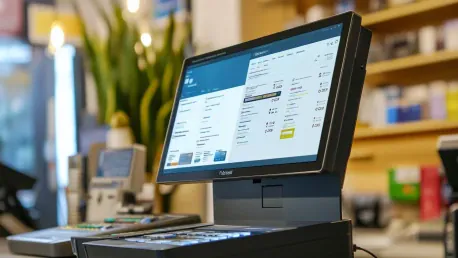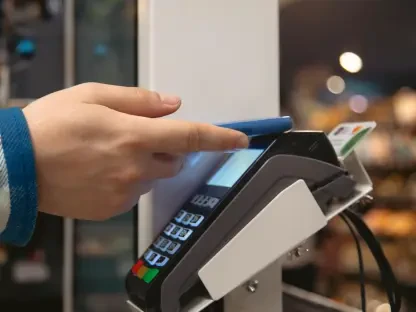Point-of-sale (POS) software has become an essential tool for businesses of all sizes, helping to streamline operations, manage inventory, process payments, and analyze sales data. As we move into 2025, the landscape of POS solutions continues to evolve, offering more advanced features and greater integration capabilities. Investing in the right POS software is crucial for ensuring that your business operates efficiently and meets the ever-changing demands of customers. This article explores the top POS software solutions available in 2025, highlighting their key features, benefits, and potential drawbacks to help you make an informed decision.
The Evolution of POS Systems
The journey of POS systems from simple cash registers to today’s sophisticated software has been remarkable. Early POS systems were primarily designed for basic transaction processing, but the demands of modern business have driven POS solutions to offer far beyond simple sales recording. These modern systems come equipped with a range of functionalities such as inventory management, customer relationship management (CRM), sales analytics, and seamless integration with other business tools. This evolution has arguably transformed the POS system into the nerve center of business operations. The shift towards cloud-based solutions has further enhanced the agility and accessibility of these systems, allowing business owners to access their data from anywhere and at any time.
The trend towards industry-specific solutions has also gained significant momentum. Different sectors require distinct features that cater to their unique operational needs. For instance, restaurants need more comprehensive table management and order tracking functionalities, whereas retail stores might prioritize real-time inventory tracking and integration with eCommerce platforms. This shift towards specialized POS solutions ensures that businesses can find a system tailored to their specific requirements, significantly improving efficiency and customer service quality.
Key Features to Look for in a POS System
Choosing the right POS system involves understanding the key features that align with your business operations. One of the primary aspects to consider is the user interface. A POS system must be easy to navigate, and its interface should be intuitive enough for staff to quickly learn and efficiently operate. This ease of use ensures that employees can focus on delivering excellent customer service without being bogged down by complicated technology.
Payment processing capabilities are another critical feature. A robust POS system should support various payment methods, including credit/debit cards, digital wallets, and contactless payments. This flexibility ensures that businesses can cater to their customers’ preferred payment methods, leading to enhanced customer satisfaction and streamlined transactions. Inventory management features are equally important. Effective inventory tracking helps businesses maintain optimal stock levels, manage reordering processes, and avoid costly stockouts, ultimately improving the bottom line.
Customer management (CRM) tools integrated within the POS system can significantly enhance customer engagement and retention. These tools enable businesses to track customer information, purchase history, and preferences. Armed with this data, businesses can create personalized marketing campaigns and loyalty programs that resonate with customers, boosting sales and fostering loyalty. Finally, integration capabilities cannot be overlooked. The ability to seamlessly integrate with other business tools—such as accounting software, eCommerce platforms, and third-party applications—means smoother workflows and less manual data entry, ensuring operational efficiency and data accuracy.
Square: A Versatile Solution for All Business Sizes
Square is often hailed as one of the most versatile POS solutions in the market, catering to a broad spectrum of business sizes and types. Its journey from a mobile card reader in 2009 to a comprehensive suite of tools today underlines its adaptability and focus on innovation. Square’s user-friendly interface simplifies the complex processes of managing sales, inventory, and customer relations, making it a popular choice for both startups and well-established enterprises. The system’s ability to support a variety of payment methods—including credit cards, digital wallets, and installment options—ensures that businesses can meet diverse customer preferences effortlessly.
One of the standout features of Square is its robust customer management tools. The platform offers loyalty programs that encourage repeat business, and its marketing automation capabilities make it easier to engage customers with targeted promotions. In addition to these customer-centric features, Square excels in integrating online and offline sales platforms. This seamless integration allows businesses to manage in-store and online sales efficiently from a single dashboard, ensuring that inventory levels and sales data are always up-to-date and accurate. Square also provides extensive business management support, including features such as payroll management and team oversight, making it a one-stop solution for growing businesses.
Square’s hardware options, such as Square Register and Square Terminal, complement its software capabilities, providing reliable and user-friendly devices for efficient in-store operations. These hardware solutions are designed to cater to various business needs, from mobile vendors to large-scale enterprises. Despite its numerous strengths, it’s essential to consider some potential drawbacks. Square’s availability is somewhat limited to certain geographic regions, and businesses may incur additional costs for advanced features. Moreover, while Square offers reliable customer support, resolving complex issues can sometimes be time-consuming.
Toast: Tailored for the Restaurant Industry
Toast is a POS solution that has carved out a niche in the restaurant industry, becoming a trusted name for over 127,000 establishments worldwide. Tailored specifically to meet the unique demands of restaurants, Toast offers a cloud-based system that streamlines various aspects of restaurant operations, from order processing to payroll management. One of the primary advantages of Toast is its cloud-based accessibility, allowing restaurant owners and managers to monitor and manage their operations from any location with internet access. This flexibility is complemented by an offline mode that ensures the system remains functional even if the internet connection is disrupted.
The hardware offered by Toast is another key advantage, designed to withstand the demanding environment of the restaurant industry. The durable and reliable devices ensure that the POS system functions seamlessly during peak hours and high-pressure situations, minimizing downtime and enhancing operational efficiency. Toast also offers a range of customizable add-ons, such as payroll integration, comprehensive inventory management, and online ordering, allowing restaurants to tailor the system to their specific needs and scale as they grow. The platform’s extensive integration capabilities with over 200 other tools further enhance its functionality, providing a comprehensive solution for restaurant management.
Toast’s 24/7 customer support ensures that restaurants can receive assistance whenever needed, which is crucial for an industry that operates beyond typical business hours. However, it’s important to consider that Toast is typically more expensive than other POS systems, given its specialized features and robust hardware. While this higher cost may be justified for restaurants that require advanced functionalities, smaller establishments with simpler needs might find it less cost-effective. Additionally, some of Toast’s advanced features may come with extra costs, making it essential for businesses to thoroughly evaluate their requirements before committing.
Lightspeed: Comprehensive Solutions for Diverse Industries
Lightspeed is renowned for its versatility and ability to cater to various industries, including retail, hospitality, and even golf course management, with over 165,000 global locations using its platform. This POS system is designed to enhance operations and customer experiences through powerful tools that streamline and integrate both physical and online operations. One of Lightspeed’s standout features is its multichannel management capability, enabling businesses to seamlessly manage sales and inventory across multiple channels. This feature is particularly beneficial for businesses that operate both brick-and-mortar stores and eCommerce platforms, ensuring a cohesive and efficient workflow.
Real-time inventory tracking is another significant advantage offered by Lightspeed. This functionality helps businesses prevent stock shortages, streamline the restocking process, and maintain optimal inventory levels. The integrated payment processing system simplifies transactions, offering customers a smooth and efficient checkout experience. Lightspeed also provides data-driven insights through detailed reporting and analytics, empowering business owners to make informed decisions based on real-time data. These insights can be crucial for identifying sales trends, understanding customer preferences, and optimizing business strategies.
For businesses with multiple locations, Lightspeed offers customizable management tools that allow for centralized control and efficient operations. This feature ensures consistent management and oversight across all branches, enhancing overall operational efficiency. The platform also provides personalized 24/7 support, ensuring that businesses can receive assistance whenever needed. While Lightspeed offers numerous benefits, it’s essential to consider its potential drawbacks. The system’s higher pricing may be a barrier for small businesses with limited budgets, and the extensive range of features might be overwhelming for those with simpler needs. Additionally, leveraging all of Lightspeed’s advanced functionalities may require training, making it crucial for businesses to assess their specific requirements and resources.
Clover: Flexibility and Versatility for Small Businesses
Clover is another highly flexible and versatile POS solution suitable for small businesses, restaurants, and retail stores. It offers a comprehensive range of features designed to cater to various business types, making it a popular choice for establishments looking for a reliable and scalable POS system. One of Clover’s key strengths lies in its extensive range of hardware options, including devices like Clover Go, Clover Mini, Clover Flex, and Clover Station Duo. This variety ensures that businesses can find hardware that suits their specific operational needs, from mobile vendors to larger retail stores.
Clover supports a broad spectrum of payment methods, including credit and debit cards, digital wallets, and contactless payments, ensuring a smooth and flexible checkout process for customers. The platform also offers robust customer management tools, including loyalty programs and marketing tools, to help businesses enhance customer engagement and retention. Inventory management is another strong suit of Clover, with features that allow businesses to track stock levels, manage reordering processes, and prevent stockouts. This comprehensive inventory management capability is crucial for maintaining optimal stock levels and ensuring that businesses can meet customer demand.
One unique aspect of Clover is its funding support through Clover Capital, which offers fast funding options based on sales performance. This feature can be particularly beneficial for small businesses that may require additional capital to support growth or manage cash flow. Clover also boasts an extensive app marketplace, providing businesses with access to a wide range of third-party applications that enhance the functionality of the POS system. These apps cover various needs, from eCommerce integration to reservation management, ensuring a tailored solution for diverse business requirements.
While Clover offers numerous advantages, it’s important to consider the potential drawbacks. The monthly subscription costs can add up, particularly for businesses that require access to premium apps and advanced features. Additionally, Clover’s offline functionality is somewhat limited, which could be a challenge for businesses that experience frequent internet disruptions. Despite these considerations, Clover remains a highly flexible and versatile POS solution that can meet the needs of various small businesses.
Conclusion
Point-of-sale (POS) software has become an indispensable tool for businesses of all sizes. It helps streamline operations, manage inventory, process payments, and analyze sales data. As we approach 2025, POS solutions are continually evolving, offering more advanced features and greater integration capabilities. Selecting the right POS software is vital for ensuring that your business runs efficiently and meets the ever-changing demands of customers.
The latest POS systems offer heightened security measures, enhanced user interfaces, and improved customer relationship management (CRM). These systems can integrate with various other business applications, allowing for a comprehensive understanding of your business operations. With real-time data analytics, owners can make informed decisions quickly—whether it involves restocking inventory, modifying pricing strategies, or identifying sales trends.
Moreover, cloud-based POS systems offer the flexibility to access your business data from anywhere, providing valuable insights in real-time. This adaptability is particularly useful for businesses with multiple locations or those that rely on remote management. However, choosing the right system can be daunting due to the variety of features and pricing models available. This article explores the top POS software solutions in 2025, highlighting their key features, benefits, and potential drawbacks to help you make an informed decision.









